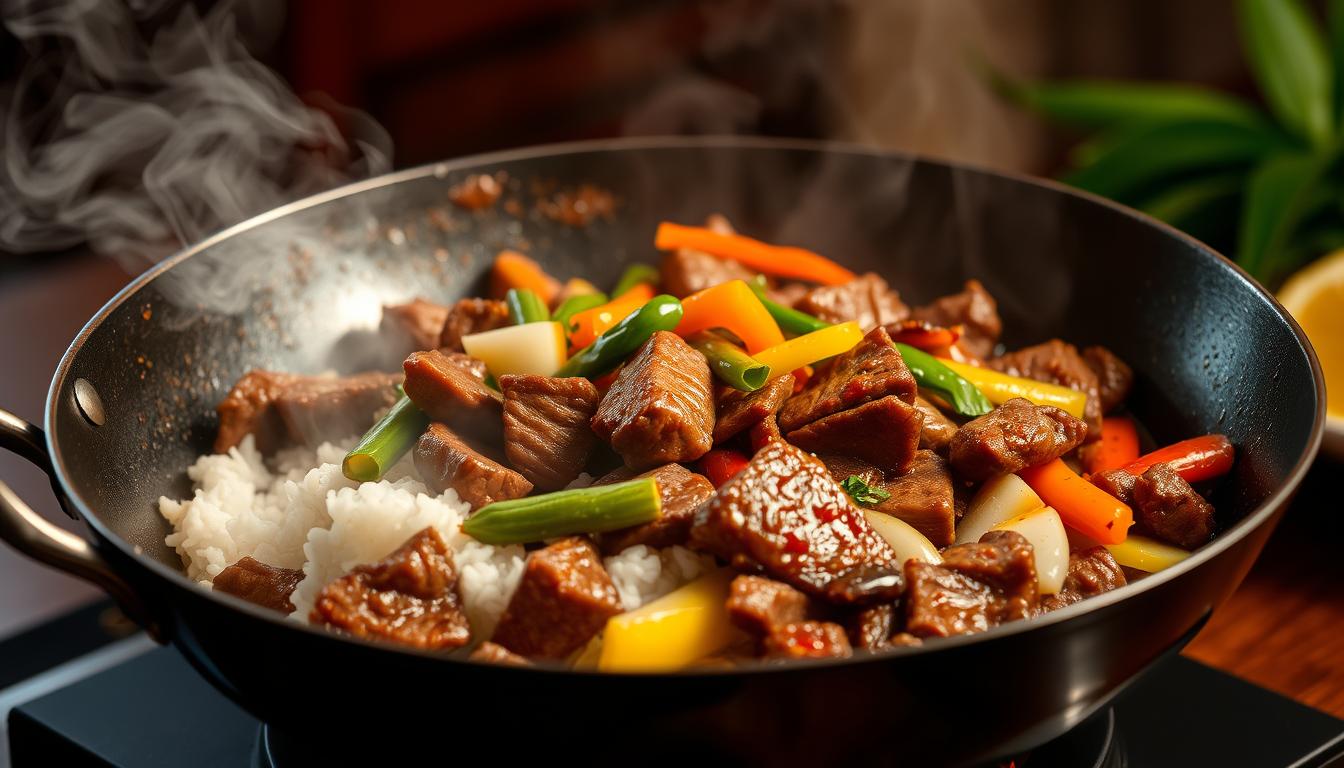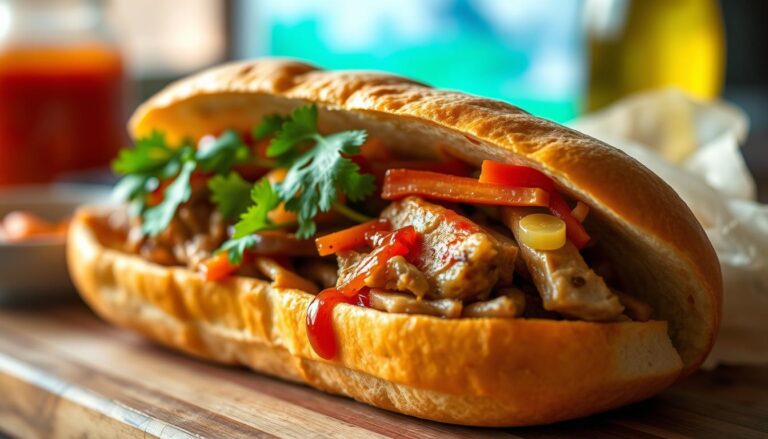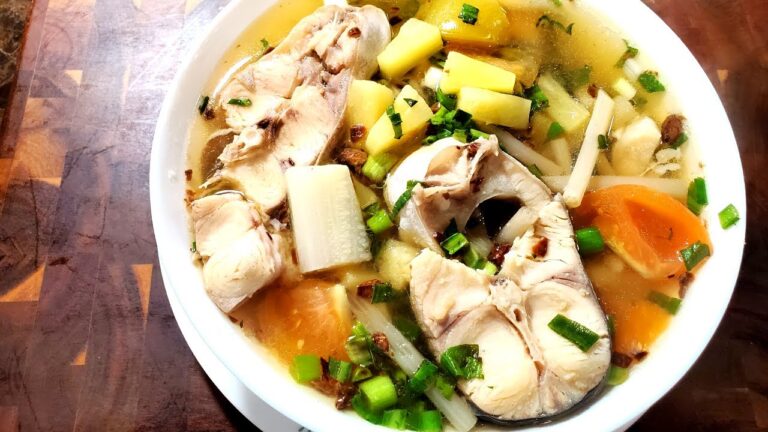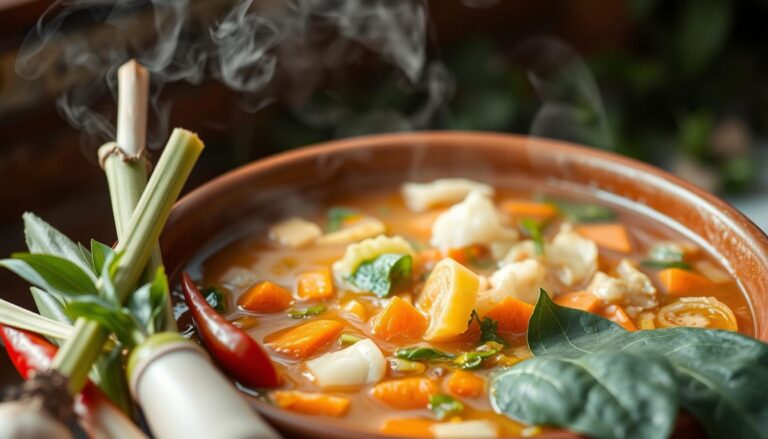Lok Lak Recipe – How to Make Authentic Cambodian Stir-Fried Beef
Lok Lak is more than just a popular Cambodian dish it’s a flavorful narrative of post-colonial culinary identity, blending local Khmer ingredients with French influence to create a uniquely balanced, tangy, and savory stir-fried beef entrée. Known for its tender marinated beef cubes, zesty lime-pepper dipping sauce, and crisp vegetable bed, Lok Lak is one of Cambodia’s national treasures.
In this article, we’ll dive into the origins of Lok Lak, its cultural significance, key ingredients, flavor profile, and most importantly how to make it at home using traditional techniques.
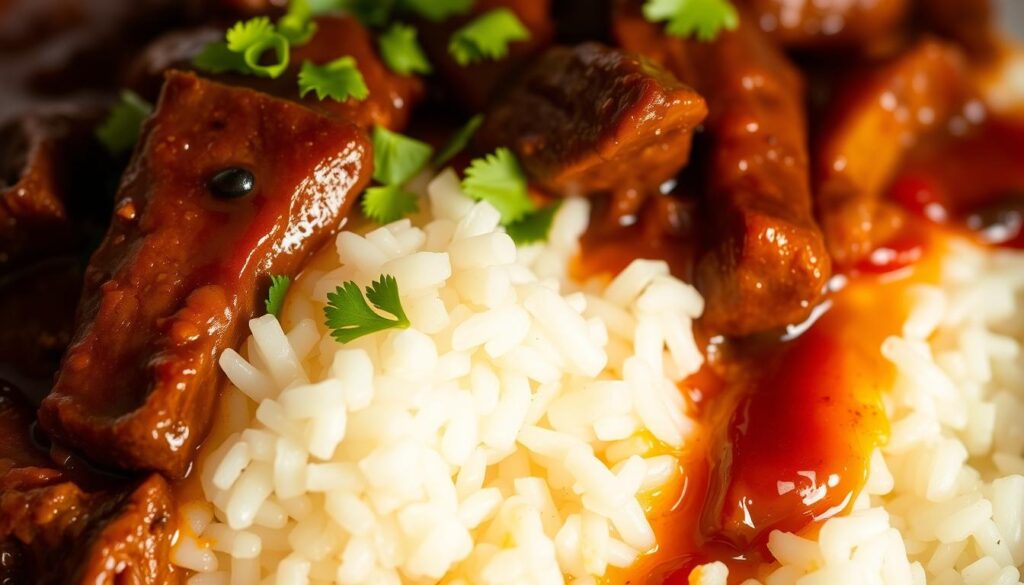
What is Lok Lak?
Lok Lak (Khmer: លុកឡាក់) is a Khmer stir-fried beef dish that reflects Cambodia’s culinary fusion of indigenous and colonial influences. Often made with beef tenderloin or sirloin, it features a bold marinade that combines soy sauce, oyster sauce, garlic, and black pepper, served over a bed of fresh vegetables and paired with a traditional lime and Kampot pepper dipping sauce called Tuk Meric.
What makes Lok Lak unique is its balance of textures and flavors savory, tangy, sweet, and peppery all served together in one comforting dish. Though it is most closely associated with Cambodian cuisine, Lok Lak also shares similarities with Vietnamese bò lúc lắc, underscoring the cross-cultural ties within Southeast Asia.
Historical and Cultural Background
Lok Lak’s origins are deeply embedded in Cambodia’s colonial past. During the French occupation of Indochina, local cuisines began to reflect European techniques especially in the use of stir-frying beef and plating it alongside lettuce, tomato, and even fried eggs. This culinary evolution was not mere imitation but a creative reinterpretation of Western-style dishes using Khmer ingredients and flavor logic.
In post-colonial Cambodia, Lok Lak became popularized in both urban restaurants and rural kitchens, adapting over time to accommodate local produce and family tastes. Today, it is a symbol of modern Khmer cooking, frequently served at family gatherings, weddings, and in eateries across Phnom Penh, Siem Reap, and beyond.
Key Ingredients and Flavor Notes
A well-executed Lok Lak relies on the harmony between its marinade, meat, vegetable bed, and dipping sauce. Each element has a functional and cultural purpose:
1. Beef
- Preferred cuts: sirloin, tenderloin, or flank
- Must be sliced thin and marinated to ensure tenderness
- Central protein entity in the dish
2. Marinade
- Soy sauce: foundational salty umami base
- Oyster sauce: depth and richness
- Garlic: aromatic pungency
- Sugar or honey: balances the salt and spice
- Black pepper: essential for authentic Cambodian spice profile
3. Vegetables
- Lettuce, cucumber, tomatoes: refreshing contrast to hot beef
- Act as cooling agents and palate cleansers
4. Tuk Meric (Dipping Sauce)
- Kampot pepper (a PGI-certified Cambodian pepper)
- Fresh lime juice
- Salt or fish sauce
- Provides tangy acidity and pungent complexity
5. Optional Toppings
- Fried egg: Reflects French influence
- Steamed jasmine rice: Traditional Cambodian starch accompaniment
Step-by-Step Guide to Making Lok Lak
This step-by-step guide follows the traditional Cambodian method and is suitable for home cooks of all levels.
Ingredients (Serves 2–4)
- 500g beef sirloin or tenderloin, thinly sliced
- 2 tbsp soy sauce
- 1 tbsp oyster sauce
- 1 tsp sugar or honey
- 2 cloves garlic, minced
- 1 tbsp vegetable oil
- Freshly ground black pepper
For Tuk Meric (Dipping Sauce):
- 1 tsp ground Kampot pepper (or freshly cracked black pepper)
- Juice of 1–2 limes
- Pinch of salt or 1 tsp fish sauce
To Serve:
- Steamed jasmine rice
- Fresh lettuce leaves
- Sliced cucumbers and tomatoes
- Fried eggs (optional)
Instructions
Step 1: Marinate the Beef
In a mixing bowl, combine soy sauce, oyster sauce, sugar, garlic, and a generous amount of black pepper. Add the beef slices, toss to coat, and marinate for 20–30 minutes.
Step 2: Make the Dipping Sauce (Tuk Meric)
In a small bowl, combine Kampot pepper, fresh lime juice, and salt (or fish sauce). Adjust according to taste. Set aside.
Step 3: Prepare the Vegetables
Wash and slice the tomatoes and cucumbers. Lay them over a bed of lettuce on each serving plate. Prepare steamed jasmine rice and, if desired, fry eggs sunny-side up.
Step 4: Stir-Fry the Beef
Heat oil in a large pan or wok over medium-high heat. Add the marinated beef in batches to avoid overcrowding. Sear for 1–2 minutes per side until browned but still tender. Remove and let rest briefly.
Step 5: Assemble and Serve
Plate the rice, top with beef, and arrange the vegetable salad on the side. Add a fried egg if using. Serve Tuk Meric on the side as a dipping sauce.
Flavor Profile and Culinary Analysis
Lok Lak is a multisensory experience:
- Taste: Rich umami from soy and oyster sauce, balanced by sweet and sour lime-pepper sauce
- Texture: Tender beef contrasts with the crispness of raw vegetables and the softness of jasmine rice
- Temperature: Hot beef and rice against cool salad and tangy sauce
- Aromatics: Garlic and Kampot pepper provide a signature scent unique to Khmer cuisine
This dish aligns with Khmer culinary philosophy, emphasizing harmony, balance, and respect for ingredients.
Lok Lak vs. Bò Lúc Lắc: What’s the Difference?
Though Vietnamese Bò Lúc Lắc and Cambodian Lok Lak share similarities, there are key differences:
- Lok Lak emphasizes a simpler marinade with a brighter, tangier dipping sauce.
- Cambodian Lok Lak is usually plated over a salad base with rice, while the Vietnamese version is often served with French fries or baguette.
- Lok Lak’s Tuk Meric is culturally unique and central to the dish’s flavor identity.
Nutritional Information and Dietary Notes
Lok Lak offers:
- High protein from lean beef
- Essential micronutrients from fresh vegetables
- Healthy fats from minimal oil
- Naturally gluten-free (if using gluten-free soy sauce)
To make it even healthier:
- Use low-sodium soy sauce
- Skip or bake the fried egg
- Serve over brown rice or quinoa
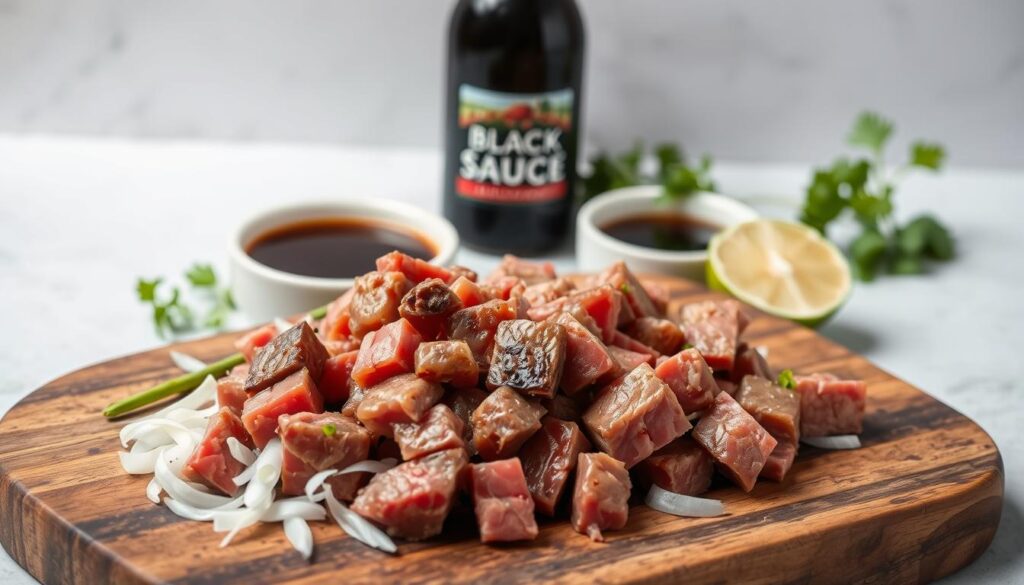
Conclusion: Why Lok Lak Is a Cambodian Culinary Icon
Lok Lak is more than a recipe it’s a reflection of Cambodia’s history, a plate full of contrasts, and a reminder of how food transcends boundaries. Whether you’re discovering it for the first time or preserving a family tradition, mastering Lok Lak allows you to bring a taste of Cambodia to your own kitchen.
Simple yet deeply satisfying, Lok Lak represents the essence of Khmer cuisine: bold, balanced, and rooted in history.

